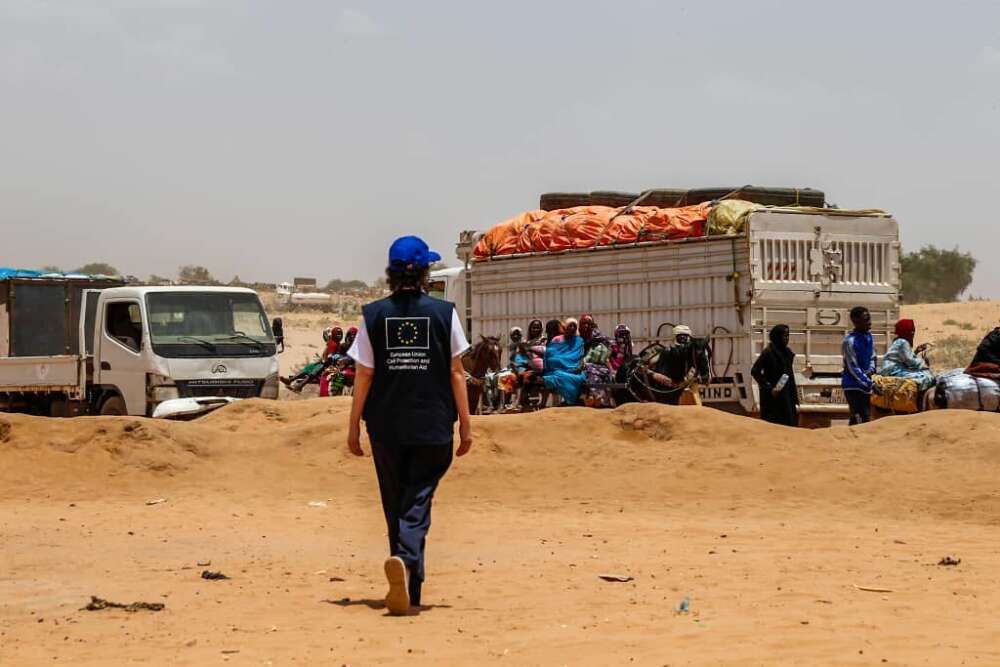Business Engagement in Humanitarian Response and Disaster Risk Management

Background
Two forms of business engagement exist in the context of humanitarian response and disaster risk management: commercial engagement, in which companies are paid for their products and services, and non-commercial engagement in which companies partner with humanitarian organizations for reasons other than direct payment.
Companies, as commercial providers of products and services, have always played a significant role in the humanitarian system, in particular local companies in communities affected by crises. Humanitarian organizations regularly subcontract such firms in a commercial, for-profit manner to implement a vast array of humanitarian services, such as construction, logistics and security and monitoring services. They have been and remain critical in providing services that either humanitarian organizations are unable to provide themselves or companies are simply better placed for. One could call these companies that work with humanitarian organization on a commercial basis “traditional” actors in humanitarian response and disaster risk management.
At the same time, companies have long been involved in the humanitarian system in a non-commercial capacity, for example, as philanthropists that donate money to humanitarian causes or as partners to international and non-governmental organizations.
Main Trends
In light of two major trends impacting the humanitarian system, the desire of some humanitarian organizations to expand their work with the private sector has recently intensified. First, the need for more effective humanitarian response and better mitigating the risks of disasters in advance are increasing significantly due to climate change, natural disasters, population growth, conflict- and violence-driven causes and the displaced populations resulting from these factors. Consequently, the humanitarian system is struggling to respond, and while overall financing is increasing along with these needs, it is not keeping pace. This increases the attractiveness of the private sector as an additional source of funding and a partner that would improve the effectiveness of response activities.
Second, innovative approaches to improving humanitarian response and disaster risk management often rely strongly on private sector expertise. For example, the increasing emphasis on cash and voucher programming relies on private sector structures and mechanisms such as bank cards and mobile cash transfers. The same holds true for innovative technologies and instruments for supporting disaster risk management action, such as early warning systems and new insurance products that provide opportunities for increasing the resilience of disasterprone areas. Moreover, new technologies developed by the private sector – such as social media, mobile applications and geographical information systems – are changing the way humanitarian organizations respond to sudden-onset disasters and providing new interfaces between humanitarian organizations and companies. This is reflected in, for example, a growing emphasis on skills-based volunteering of highly qualified and corporate experts in areas such as logistics or information and communication technology (ICT).
These are just a few of the many new roles that local and international companies are already playing in their work with humanitarian organizations – and their interest in these engagements is likely to grow. As a result of globalization, the development of global supply chains, international customer and employee bases and greater emphasis on the negative global externalities of business activities, companies are realizing more and more that there are tangible benefits to engaging in humanitarian work. As humanitarian crises become more frequent, more intense and more visible in the media, a number of companies have come around to the fact that engagement in humanitarian activities, including in disaster risk management and civil protection, not only promotes corporate social responsibility (CSR), but also can be a worthwhile investment for their bottom line.
The overlap of these humanitarian and business trends have created new opportunities for public-private collaboration in the humanitarian and disaster risk management sectors. But for humanitarian organizations, whether and how to engage with companies is a sticky issue. Detractors argue that due to the profit motive and accountability to shareholders, companies have little incentive to abide by accepted humanitarian principles and, as such, their role in humanitarianism should be limited to the provision of products and services that humanitarian organizations are unable to provide themselves. Moreover, there is a legitimate fear that increasing the number of actors in the humanitarian system will complicate coordination mechanisms that are already very complex.
The Humanitarian Aid and Civil Protection Department of the European Commission (DG ECHO) has requested this study to support its internal policy formulation on whether and how to work with the private sector in the areas of humanitarian response and disaster risk management. This study is based on a review of available literature, reports of relevant humanitarian organizations and interviews with selected experts and practitioners. Civil protection issues are addressed wherever possible, but due to the scarcity of well-documented good practice, the major focus of this study is private sector engagement in humanitarian response and disaster risk management. The resulting analysis does, however, draw implications with regard to Business engagement in humanitarian response and disaster risk management 11 civil protection within the European Union, given that the framework conditions for both areas – humanitarian aid and civil protection – are similar.
…







